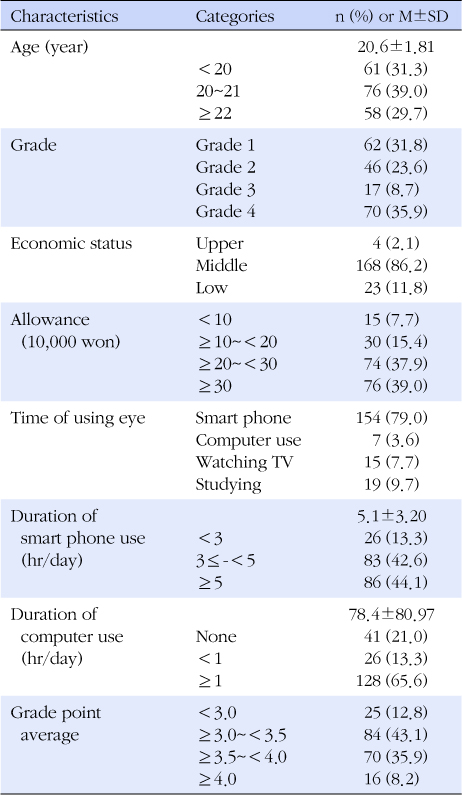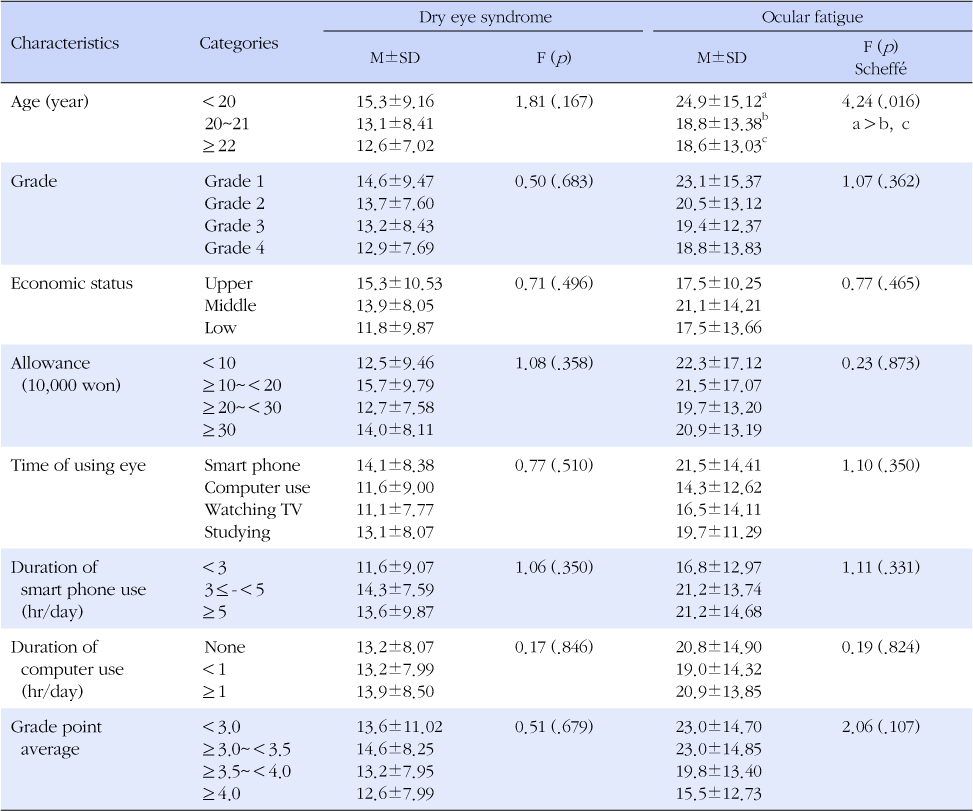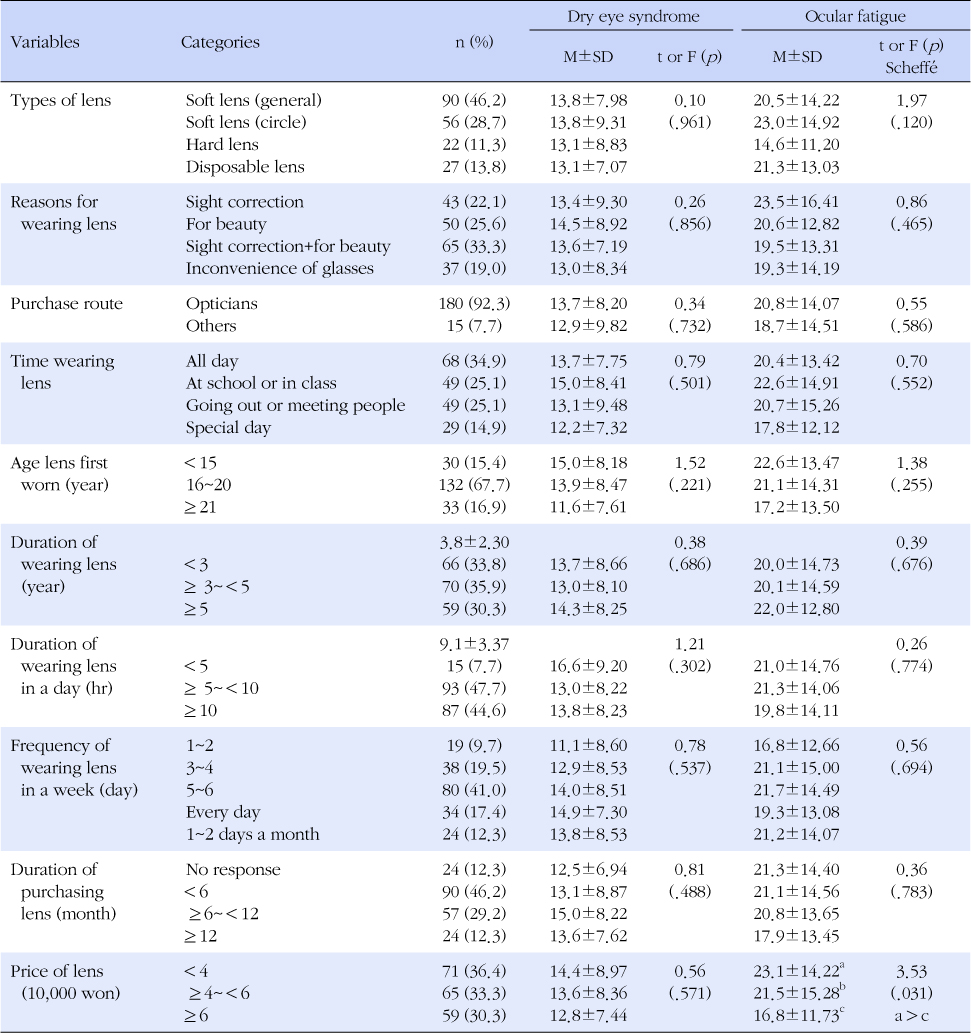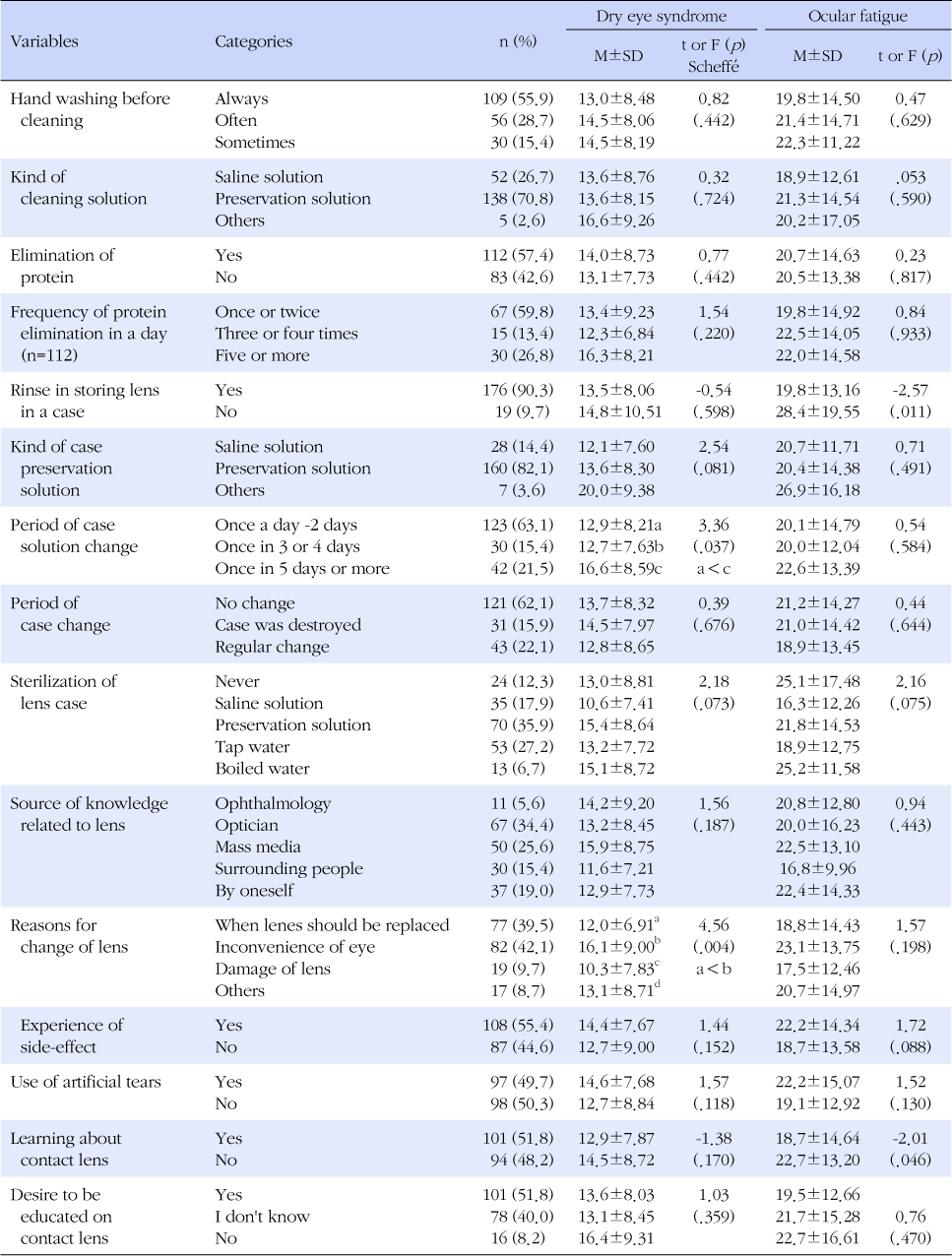Dry Eye Syndrome and Ocular Fatigue according to the Status of Contact Lens Wearing and Management among Female University Students
Article information
Abstract
Purpose
The purpose of this study was to examine dry eye syndrome and ocular fatigue according to the status of contact lens wearing and management among female university students.
Methods
The subjects were 195 female university students wearing contact lenses. Ocular Surface Disease Index (OSDI) and Virtual Reality Symptom Questionnaire (VRSQ) were used to determine the level of dry eye syndrome and ocular fatigue. The SPSS/WIN 21.0 program was used for analysis of data.
Results
Significant differences in the level of dry eye syndrome were observed according to the period of case solution change (F=3.36, p=.037) and the reasons for the change of lens (F=4.56, p=.004). In ocular fatigue, significant differences were observed according to the price of lens (F=3.53, p=.031), rinse in storing lens in a case (t=-2.57, p=.011), and learning about contact lens (t=-2.01, p=.046). A significant positive correlation was observed between dry eye syndrome and ocular fatigue in the subjects.
Conclusion
The results of this study show that some subjects have problems in wearing and management of contact lenses. Therefore, an education program related to contact lenses should be provided to contact lens wearers to improve the status of wearing and management of contact lenses.
Notes
This study was supported by research fund from Chosun University, 2012.




